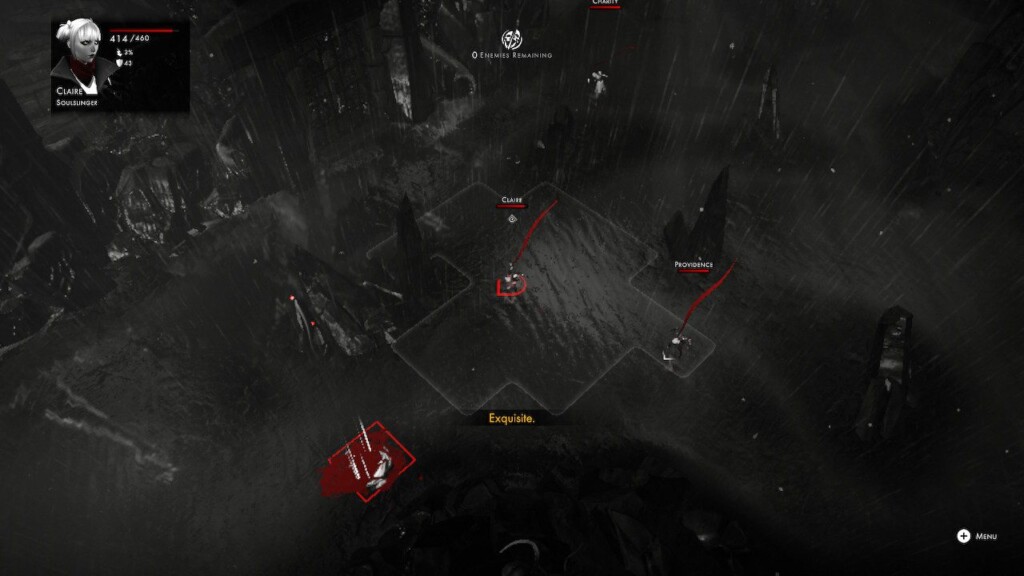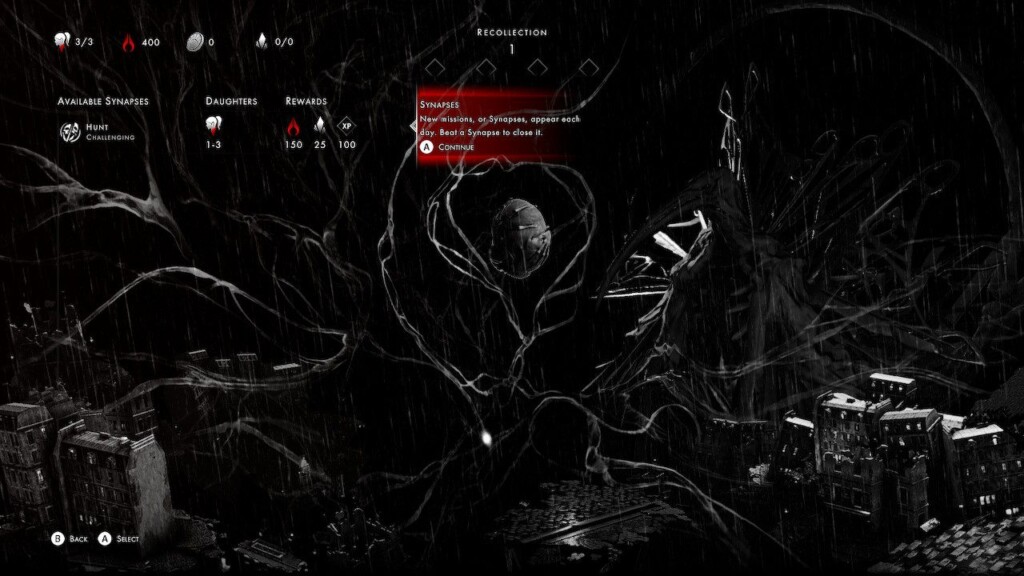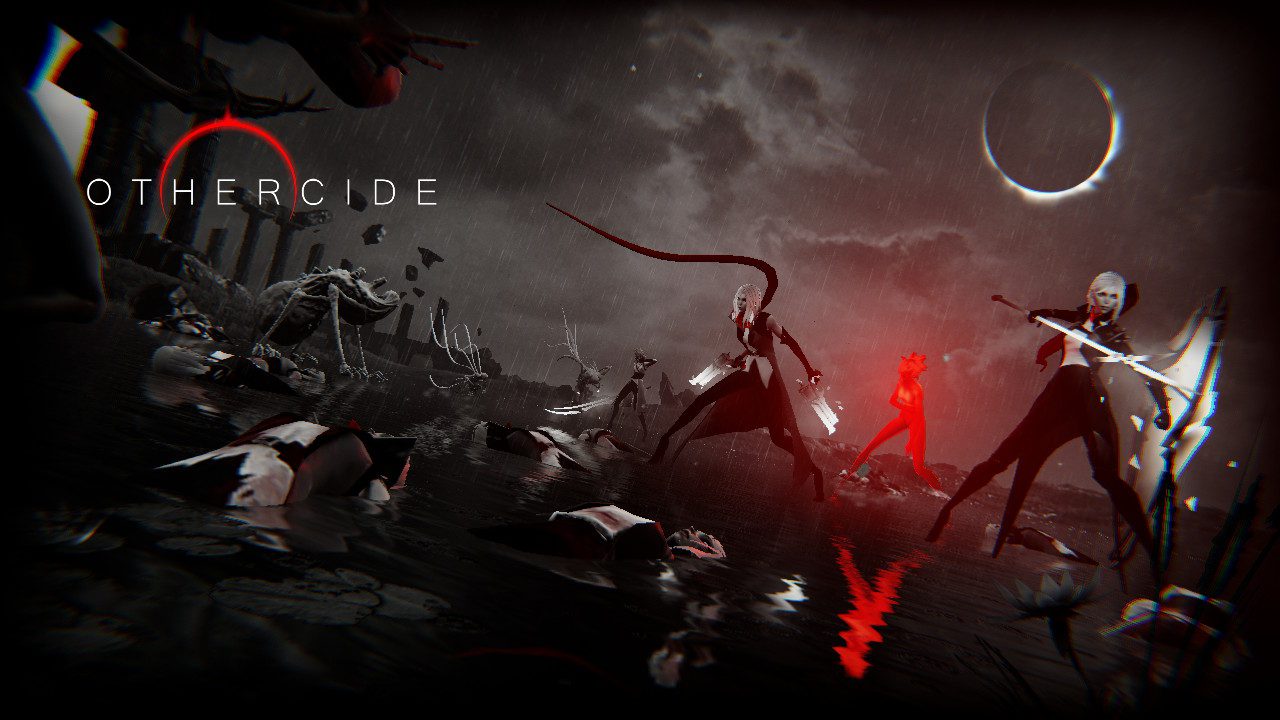Othercide is a fairly brutal Tactical RPG. So, upfront, I can probably say it’s not going to be everyone’s cup of tea. But those that can handle what it throws at them will probably enjoy it.
For starters, this is one of those games where the story’s… kinda hard to grasp. I’ll be honest, During my time playing, I really had little idea of the motivations of, really, anyone. There aren’t hard names for characters central to the plot, it’s always “The X” (e.g. The Mother, The Child, The Doctor).
Aside from some lore dumps that are gained randomly as you play, it’s pretty difficult to judge what story there is in the game based on just playing through it. You’ll get a cutscene that pours over your eyes and you’ll just say to yourself “well, that’s cool, but I have no idea what it meant”. Maybe there are hardcore Othercide player that are going to scream at me that I’m doing it all wrong, maybe there aren’t. All I’m going to say is that if you need a strong, central narrative to hold your interest in a game, this probably isn’t it.
As far as looks go, they’re probably one of the more striking things about the game. Othercide looks like the sweaty love child of Sin City and Bloodborne. If that didn’t sell you on this, I don’t know what will.

(Lightbulb Crew, Focus Home Interactive)
The mechanics, however, are the meat and potatoes here. Othercide has a couple of mechanics that play together in an interesting way. For starters, your units don’t heal between battles. If one of your Daughters is injured bad enough to need a heal, you’re paying a heavy price for it: you need to sacrifice another Daughter to do it. What’s more, that Daughter needs of equal experience level. Coincidentally, resurrecting Daughters is almost equally costly, requiring a resurrection token that, frankly, is difficult to get. So it’s important to keep your mainliners healthy.
Making that harder is the number of skills that use a percentage of HP to produce an effect. For example, Soulslingers have an ability that costs 10% of their HP, but will counter any single attack made against any daughter within 10 squares around them. And sometimes, that’s necessary to avoid much more serious injuries.
There is one more benefit to sacrificing a Daughter to heal another: they get a stat bonus for being healed related to the sacrificed Daughter’s class.This means that it’s entirely likely that you’re either going to raise up a B-team just to keep A-team in top condition for bosses and the like. Or, that you’ll sac a nearly dead Daughter to keep another going.

The game is brutally difficult, too. It has no qualms about sending far more enemies into battles than you can send Daughters. You’re allowed three most times, and you’ll be fighting off enemies several times their number.
Here’s the upside: you don’t have to beat the game in one go. Here’s the thing: at some point, you’re going to fail and die, probably against the first boss. Game over, right? Well, yes, but actually no. The best way I can describe this system is to compare it to the SOL system from Breath of Fire: Dragon Quarter (which, I might add, is a game I really didn’t like, in part due to this system). You start over again from day one Era one, yes; but you have a few perks.
Remembrances offer some flat benefits that you pay for in shards, which you earn just playing the game. They can be anything from letting you start with two random memories (which you can equip to a Daughter’s ability for an added effect), to giving your Daughters a higher starting HP, and so on. They’re unlocked by playing to certain milestones that you’ll eventually hit the more you play, so you can, eventually, grind your way to victory, so to speak. That victory is just going to involve a pile of corpses.

The thing you might’ve noticed is all the jargon the game uses. This is something I’m not fond of in most games. It often takes things which would be much easier to understand with a less anachronistic name and makes them impenetrable. I am, coincidentally, not fond of it here, either. For example, Vitae: it’s basically money that you use to get new Daughters (which is of course a process called “germination” rather than recruitment) and equip their skills with memories. They went whole hog on the whole artsy thing, and while it’s at least graspable through play (unlike, say, Hoshigami: Ruining Blue Earth), it still feels unnecessary in a game that already has a fairly high barrier of entry.
Aside from all that, the Switch port gave me a few troubles. Namely, I had a few little, non-gamebreaking things happen. For example, portraits in the main menu wold double, or randomize the faces/hairstyles. Mostly chump change like that; irritating, but not game ruining. What was game ruining was the time I was in a battle and suddenly found that the skill menu had broken in such a way that I couldn’t select anything but the my units’ most basic attacks. I was able to win despite this, as most learned abilities are somewhat situational. But I wasn’t terribly happy about it, even though restarting the game seemed to fix it.
So in conclusion; do I recommend Othercide? That depends heavily on how far down the rabbit hole you are on Tactical RPGs. I tend to be very picky about the ones I play, and on one hand, I can’t say this one was for me. On the other, it does feel like a game that, if you’re into it, might do well in short bursts rather than a several hour session. It really all depends on how willing you are to take multiple kicks to the nards from the game. But for those with balls of steel, there’s a pretty enjoyable game here that you’ll get to feel really superior about enjoying. Othercide‘s a game that does a number of things I don’t personally like, but it does them all well. And I think my score reflects that.
Pro:
+Looks great
+Good in chunks
+Challenging, but not unfair
Cons:
– A few bugs
– Obtuse jargon can get a bit confusing
– Story is basically impossible to follow outside surface level
Final Score:
*We were provided a copy of this game for review.*








